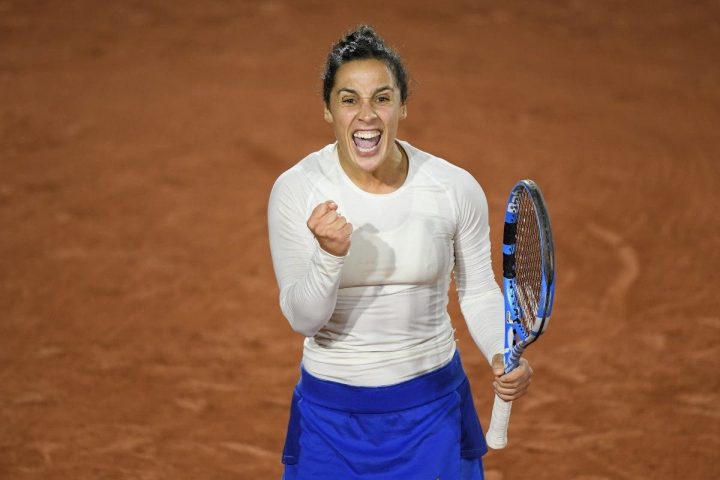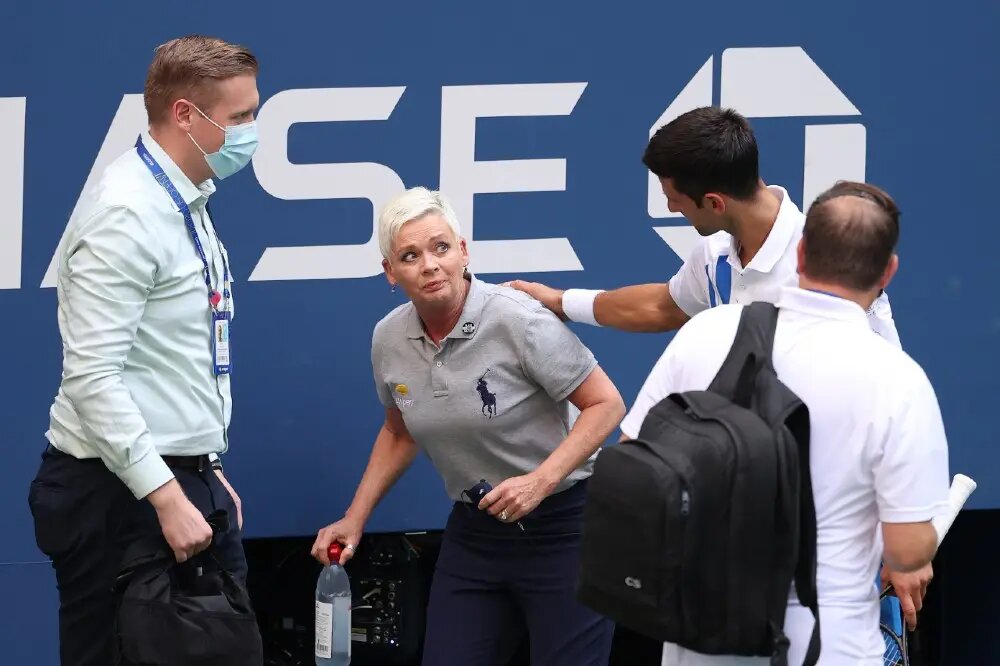Italian In Paris…

Martina Trevisan of Italy, who qualified for the 2020 Australian Open, also qualified in Paris. But that was not her real Roland Garros story. Neither was reaching the quarterfinals where tournament champion Świątek defeated her, 6-3, 6-1. A tape measure shows that Trevisan, perhaps if she is stretching, stands all of 5’3”. But what she lacks in stature she makes up for by playing with lefthanded craftiness and a level of tenacity that surpasses her height. (In today’s game, women average 5’7”.) That determination was clear when she defeated Coco Gauff of the US, 6-4, 6-2, 7-5 in the second round. Maria Sakkari, the formidable Greek woman, was the next to fall to the diminutive Italian, 1-6, 7-6, 6-3. Then, No. 5 seed Kiki Bertens of the Netherlands was dispatched, 6-4, 6-4 in the fourth round. The victories by the No. 159 ranked performer drew attention.
But there was a lot more to Trevisan. Her candor bordered on confessional. Last summer, she began to open up about personal issues. She discussed having spent time confronting a problem. Her struggle began in 2010 and consumed her for four years. More frightening, it kept her from participating in tennis. Unbeknownst to most people in the game, she was a member of a “secret society”, one that has included Madison Keys of the US, Eugenie Bouchard of Canada, as well as former players such as Marion Bartoli of France and Monica Seles of the US. She suffered from an eating disorder.
A combination of factors – her father’s illness, pressure to live up to being an elite junior, as well as tension with her mother who is a tennis coach, combined with unhappiness about her body’s muscular appearance – led her to eat next to nothing on a regular basis. She finally sought professional help and has made steady progress in her dealings with anorexia and the mental issues which accompany the affliction. Her return to competition has been as steady as her honesty in dealing with the problem. Proud of what she has accomplished, Trevisan is clear about what she wants those facing that sort of issues to know – Never give up.
Shouldn’t Be Overlooked…
When Daniel Altmaier became a professional in 2014, it seemed that he had potential. Reality was different. Shoulder and back trouble limited the German’s tour successes. Prior to qualifying for Roland Garros, the 22-year-old had never appeared in a major. His fondness for playing on Terre Battue was evident as the No. 186 ranked player dismissed Feliciano Lopez of Spain, Jen-Lennard Stuff of Germany and No. 7 seed, Matteo Berrettini of Italy and all of them in straight sets. In keeping with the three set theme, fittingly, Pablo Carreño Busta of Spain ended Altmaier’s spectacular run in straight sets, 6-2, 7-5, 6-2.
Qualifier Marco Cecchinato of Italy is the answer to the ultimate tennis trivia question – Name a current lesser “known” men’s competitor who has won at least one singles and one doubles match at each of the majors? Cecchinato owns this one-of-a-kind Grand Slam tournament double. He made his best showing in a “Big 4” at 2018 Roland Garros. That year, he upset the No. 10 and No. 8 seeds Carreño Busta of Spain and David Goffin of Belgium in the third and fourth rounds. In the quarterfinals, he downed Novak Djokovic, the No. 20 seeded Serbian who had been injured and off the tour for a time, (which resulted in the low seeding), in four sets. He lost to Dominic Thiem of Austria, 7-5, 7-6, 6-1 in the semifinals. This year in Paris, he reached the third round where Zverev sent him packing, 6-1, 7-5, 6-3.
Roland Garros Time…
Italian qualifier Lorenzo Giustino and Frenchman Corentin Moutet were involved in a two-day six hour and five minute, rain-delayed, first round match that was Tour de France energy consuming. It showcased stubbornness that rivaled drinking day-old espresso. The No. 157 ranked Giustino finally upset his twenty-one year old opponent ranked No. 71. The score said a good deal – 0-6, 7-6, 7-6, 2-6, 18-16. For Giustino, it was a spectacular first tour victory. Added to that, he hadn’t realized until his coach told him, that there was no fifth set Tie-Break in Paris.
In his next match, Diego Schwartzman, the Argentine version of a roadrunner, swept aside his weary foe, 6-1, 7-5, 6-0. Nonetheless, the twenty-nine year old Giustino left Stade Roland Garros after receiving accolades for being the winner of the second longest match in tournament history. (The longest match was also a first round battle, in 2004, when Fabrice Santoro defeated French countryman Arnaud Clement, 6-4, 6-3, 6-7, 3-6, 16-14 in a record-setting match that took six hours and thirty-three minutes.)
France’s Clara Burel, the 19-year-old former ITF Girls’ No.1, took almost three hours (two hours, fifty-seven minutes) to defeat Arantxa Rus of the Netherlands, 6-7, 7-6, 6-3. The first round contest concluded at 12:10 a.m. the latest a Roland Garros match ever finished. (This was only possible because the delay in contesting this year’s championships allowed lights to be installed on various courts.)






